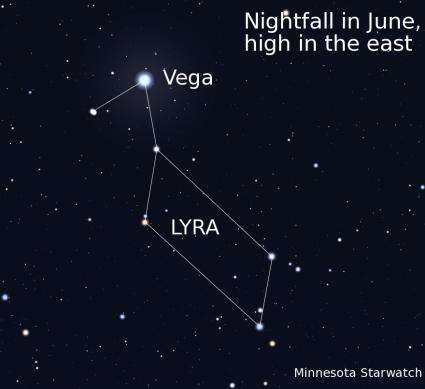Points North: The Price We Pay for Deer Abundance
| Attachment | Size |
|---|---|
| Finalcut_PN_20101210.mp3 | 5.72 MB |
New England's abundant whitetails present a host of management challenges, according to a story in the current issue of Northern Woodlands magazine. Although titled “Too Many White Tails?” author Madeline Bodin answers that question at the beginning of her story. The "right" number of deer is based not on biology, but on what is called the cultural carrying capacity: the number of deer acceptable to their human neighbors.
Within that context lie the challenges. The right number of deer for people may be the wrong number for the ecosystem. Maintaining the right number of deer is difficult on a developed landscape where there is little room or tolerance for hunting. Confounding the situation in New England is an absence of natural predators.
In Connecticut, more deer are killed on highways than by hunters. Massachusetts has trouble fielding hunters, because rules do not allow the discharge of firearms within 500 feet of any building or within 150 feet of a road, leaving little room for shooting deer. Even on lands where hunting is possible, a rising anti-hunting sentiment among landowners keeps hunters off the land and provides refuge for hunted whitetails.
Aside running over deer with vehicles, alternatives to hunting don't work. Relocation, repellants and birth control-the Connecticut Legislature once authorized buck vasectomies-are impractical and ineffective. Some heavily populated communities use sharpshooters to kill deer at baited sites, perhaps the only alternative for places where hunting cannot occur.
As deer increase in abundance, so does their influence on the ecosystem. The average whitetail eats 2,000 pounds of vegetation annually. In a natural environment, wildflowers such as trillium and showy lady's slipper begin disappearing when deer become too numerous. Desirable trees such as oak and maple are suppressed in favor of other species.
Where deer are especially numerous, they may over-browse native vegetation, making room for non-native invasive species to gain a foothold on the forest floor. Because deer continue to eat native species they prefer, invasive species that deer don't like to eat have an advantage. Deer also spread and fertilize a variety of seeds. Connecticut biologists germinated deer droppings in a greenhouse and identified 32 nonnative plants which grew from them.
Deer abundance may also affect the abundance of other wildlife, such as birds. According to the National Audubon Society, several songbirds, including the eastern wood pewees, indigo buntings, least fly-catchers and cerulean warblers, are negatively affected when deer density reaches 20 per square mile. At 40 per square mile, ground-nesting birds, including ovenbirds, ruffed grouse, woodcock, whippoorwills and wild turkeys exist at low population levels.
As whitetail numbers rise, so do disease risks for deer, other ungulates and people. Although the story did not examine the relationship between New England's deer and moose, it did point out eastern states have kept Chronic Wasting Disease at bay using precautionary measures such as feeding and baiting bans, prohibiting live deer imports from known CWD states and provinces, and only allowing hunters to import deboned venison from CWD regions. Vermont even issued a press release encouraging hunters not to use urine-based lures, which may spread CWD. When it comes to humans, deer help spread Lyme disease, as well as emerging maladies such as malaria-like babesiosis and flu-like human granulocytic anaplasmosis. In all cases, disease transmission becomes more likely as deer densities increase.
The problems associated with deer abundance in New England are not so different than Minnesota's deer issues, although the roles whitetails play in spreading invasive species or suppressing bird populations are largely beneath the radar in this state. While foresters and botanists decry the influence of deer upon some ecosystems, their criticisms rarely evolve into a broader discussion about the tradeoffs associated with carrying enough deer in the state to support a half-million license-buying hunters. Yet, we can only wonder, are we doing the right thing?
If we knew reducing deer numbers would improve grouse and woodcock populations, would we do so? If we knew we could reduce tick-borne disease infections by lowering the deer population in the high-risk areas of central and southeastern Minnesota, would we do so? What if we learned we could slow the spread of invasive species by maintaining fewer deer on the landscape?
Such questions lack easy answers, but we've already made some choices to favor deer over other resources. We know Minnesota deer greatly suppress valuable native trees and are a vector for debilitating human disease, yet we haven't taken even small steps to limit their abundance, such as discouraging feeding and cultivated food plots. Although we are among the few states blessed with a natural deer predator, the wolf, we see the animal not as an ally in deer management, but as a competitor with hunters.
This is not to say Minnesota is doing a poor job of managing deer. The state offers continuous hunting from mid September through the end of December and has multiple opportunities for hunters to kill does, especially in areas where deer abundance exceeds human tolerance for whitetails. But every year wildlife managers trot out the kill numbers with comparisons to modern record high harvests, as if killing lots of deer every year is a desirable goal.
Either we have achieved perfection in deer management or the wildlife bureaucracy is most comfortable with maintaining a politically safe status quo regarding the state's whitetail population. Certainly, the status quo is acceptable to most Minnesotans, because we haven't heard a public outcry regarding deer overabundance. As a state, we've come to accept a somewhat diminished environment, Lyme disease, and other deer damage as the price we pay for living among whitetails.
Airdate: December 10, 2010
Tweet






